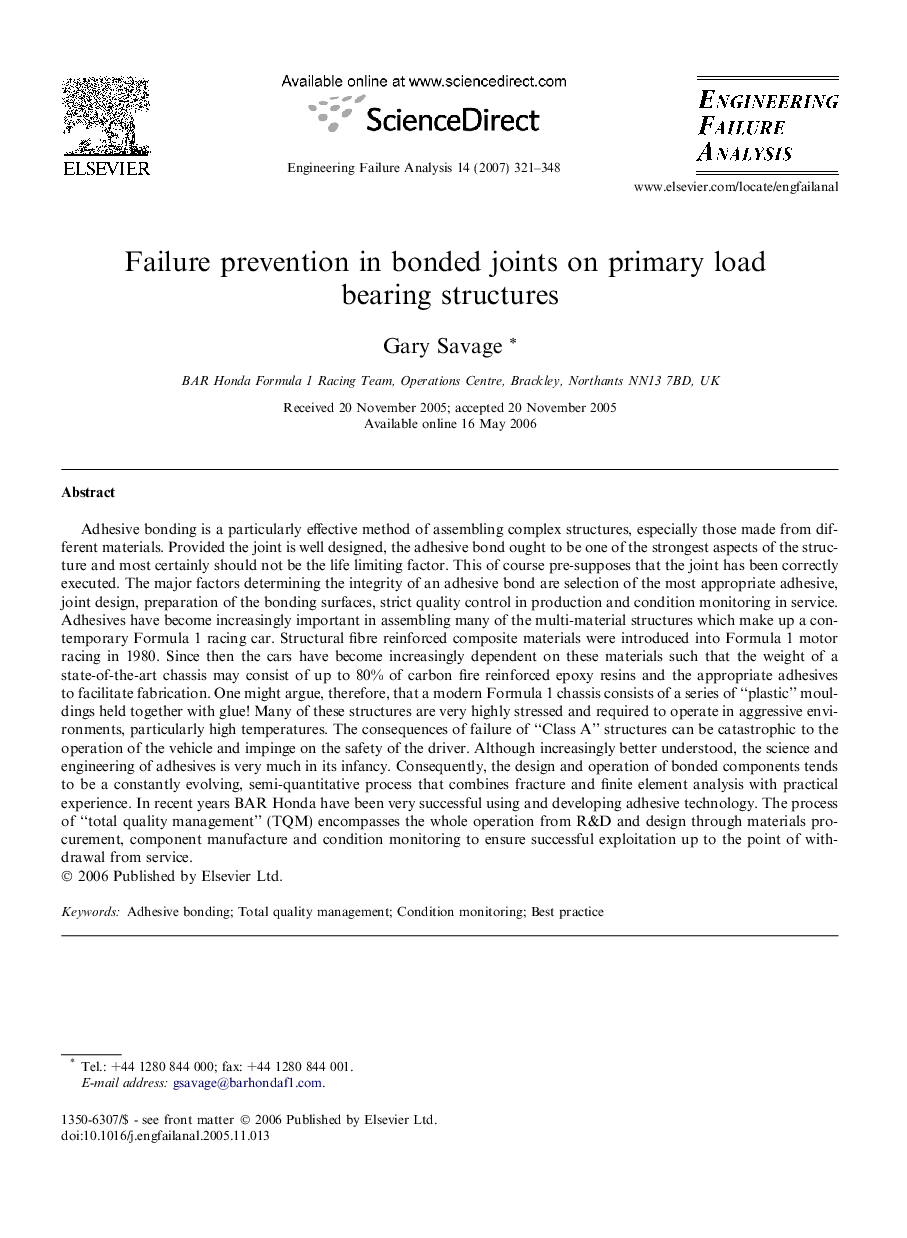| کد مقاله | کد نشریه | سال انتشار | مقاله انگلیسی | نسخه تمام متن |
|---|---|---|---|---|
| 764279 | 896976 | 2007 | 28 صفحه PDF | دانلود رایگان |

Adhesive bonding is a particularly effective method of assembling complex structures, especially those made from different materials. Provided the joint is well designed, the adhesive bond ought to be one of the strongest aspects of the structure and most certainly should not be the life limiting factor. This of course pre-supposes that the joint has been correctly executed. The major factors determining the integrity of an adhesive bond are selection of the most appropriate adhesive, joint design, preparation of the bonding surfaces, strict quality control in production and condition monitoring in service. Adhesives have become increasingly important in assembling many of the multi-material structures which make up a contemporary Formula 1 racing car. Structural fibre reinforced composite materials were introduced into Formula 1 motor racing in 1980. Since then the cars have become increasingly dependent on these materials such that the weight of a state-of-the-art chassis may consist of up to 80% of carbon fire reinforced epoxy resins and the appropriate adhesives to facilitate fabrication. One might argue, therefore, that a modern Formula 1 chassis consists of a series of “plastic” mouldings held together with glue! Many of these structures are very highly stressed and required to operate in aggressive environments, particularly high temperatures. The consequences of failure of “Class A” structures can be catastrophic to the operation of the vehicle and impinge on the safety of the driver. Although increasingly better understood, the science and engineering of adhesives is very much in its infancy. Consequently, the design and operation of bonded components tends to be a constantly evolving, semi-quantitative process that combines fracture and finite element analysis with practical experience. In recent years BAR Honda have been very successful using and developing adhesive technology. The process of “total quality management” (TQM) encompasses the whole operation from R&D and design through materials procurement, component manufacture and condition monitoring to ensure successful exploitation up to the point of withdrawal from service.
Journal: Engineering Failure Analysis - Volume 14, Issue 2, March 2007, Pages 321–348